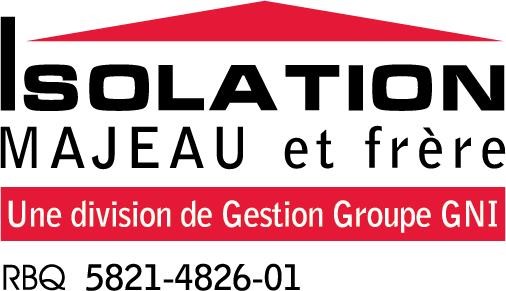Popular beliefs conveyed about residential insulation can often turn out to be false or misleading. Since energy is more and more expensive, and everyone is looking for ways to save money and preserve the environment, it is important to break these many myths to see more clearly and make strategic choices that will keep you warm during winter, and cool during summer.
1) A HOUSE MUST BREATHE!
This is a principle that was circulating in another era that a watertight wall would trap moisture inside the structure, leading to mildew problems. The truth is that insulation techniques have evolved and it’s now relatively simple to erect walls that keep the heat in the house while allowing the humidity to escape. How to achieve it? Through the proper installation of air barriers and vapour barriers, which aim respectively to prevent air from entering the envelope and to prevent water vapour from entering the wall by diffusion.
While the vapour barrier goes in place on the warm side of the framing, behind the gypsum panels, the air barrier usually goes behind the exterior sheathing. For optimal ventilation of your home, finally opt for a heat recovery ventilator (HRV), allowing both the extraction of stale air to the outside and the supply of fresh air from the outside. This system, which has become mandatory in new homes, significantly increases the comfort of occupants.
2) I WAS OFFERED URETHANE WITH R-7 VALUE
Here’s a falsehood that we are regularly confronted with in the insulation industry! To avoid being fooled, first know that the sprayed urethane used for residential insulation has a density of 2.0 lb per cubic foot and is type 1 or 2. In addition, it must absolutely be approved by the CAN/ULC 705.1 standard and the Canadian Construction Materials Centre (CCMC).
It’s true that type 2 sprayed urethane has an R-7 value when applied, but the actual thermal resistance, which is determined over the long term, is precisely what should be of interest to you when choosing an insulating material. Regardless, Type 2 sprayed urethane still exhibits the highest long-term thermal performance with an R-6 value per inch, while Type 1 urethane offers an R-value of 5 per inch. Also note that these values are known to remain stable over the years.
Demilec Airmétic Soya Urethane R-Value
– R-7.2 R-Value at application.
– R-6.6 R-Value after 180 days.
– R-6 R-Value on long-term.
– Vapour barrier and air barrier.
– Meets the CAN/ULC S705.1 norm.
– CCMC 13244-L certified.
Ask for the technical data sheet of your applicator to be sure of the product’s performance you are being sold. Demilec, a Quebec company that was founded in Boisbriand, qualifies and certifies the applicators of its product according to the CAN/ULC S705.1 standard.
3) URETHANE IS A FLAMMABLE INSULATION MATERIAL
Sprayed urethane foam is an ingredient recipe that includes flame retardants. If you apply a flame directly to the urethane, the material will not ignite because its ignition point is 540 degrees C. In addition, the building code requires that all plastic materials, including the polyethylene (polythene) sheet vapour barrier, be covered with gypsum or thermal barrier.
4) URETHANE CAN CAUSE A STRUCTURE TO ROT
Not at all! Since urethane is an inert plastic material, it cannot contribute to rotting the structure of your home. In addition, urethane ensures 100% adhesion to the substrate, which eliminates the air gap between the structure and the insulation. The absence of air and humidity therefore prevents the development of mildew. Of course, water infiltration is the worst enemy of any frame and you must make sure to create a waterproof barrier keeping water out of the house. Part of the job is done using the air barrier, which keeps moisture-laden air out, while the vapour barrier performs the same role inside the structure.
If you have your rim joists insulated and the wood is dry (19% humidity), you can have peace of mind for the life of the building.

5) INSULATION IS ONLY USEFUL IN WINTER
Not true! When it comes to residential insulation, the primary goal is to protect against the extreme cold of winter. However, effective insulation will ensure your comfort during summer by preventing heat from entering your home. If the air is too hot inside during the summer, your air conditioning costs will be high. And if you notice the appearance of mildew in the basement, this means that your thermal envelope is not doing its job well and deserves to be repaired or improved. Better sealing of your home will also have a positive impact on air and moisture infiltration.
This article was originally published on February 24, 2016 by Pierre Boucher







